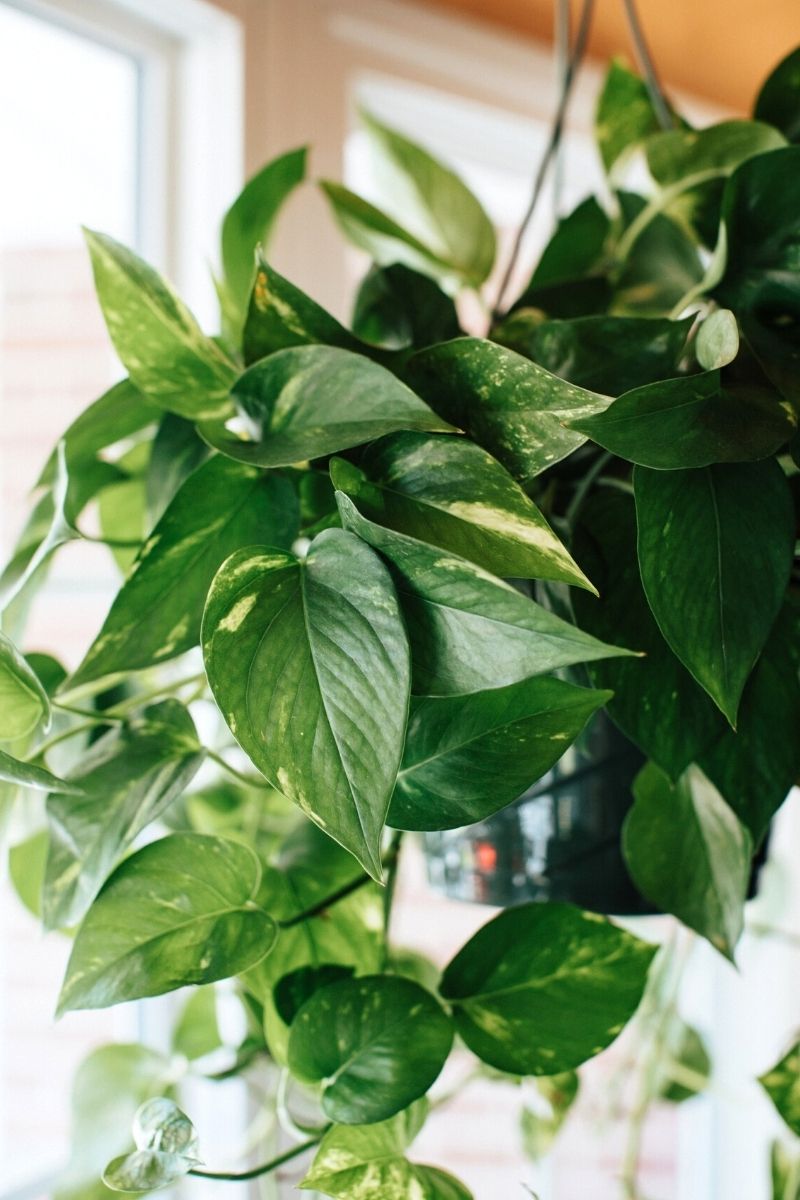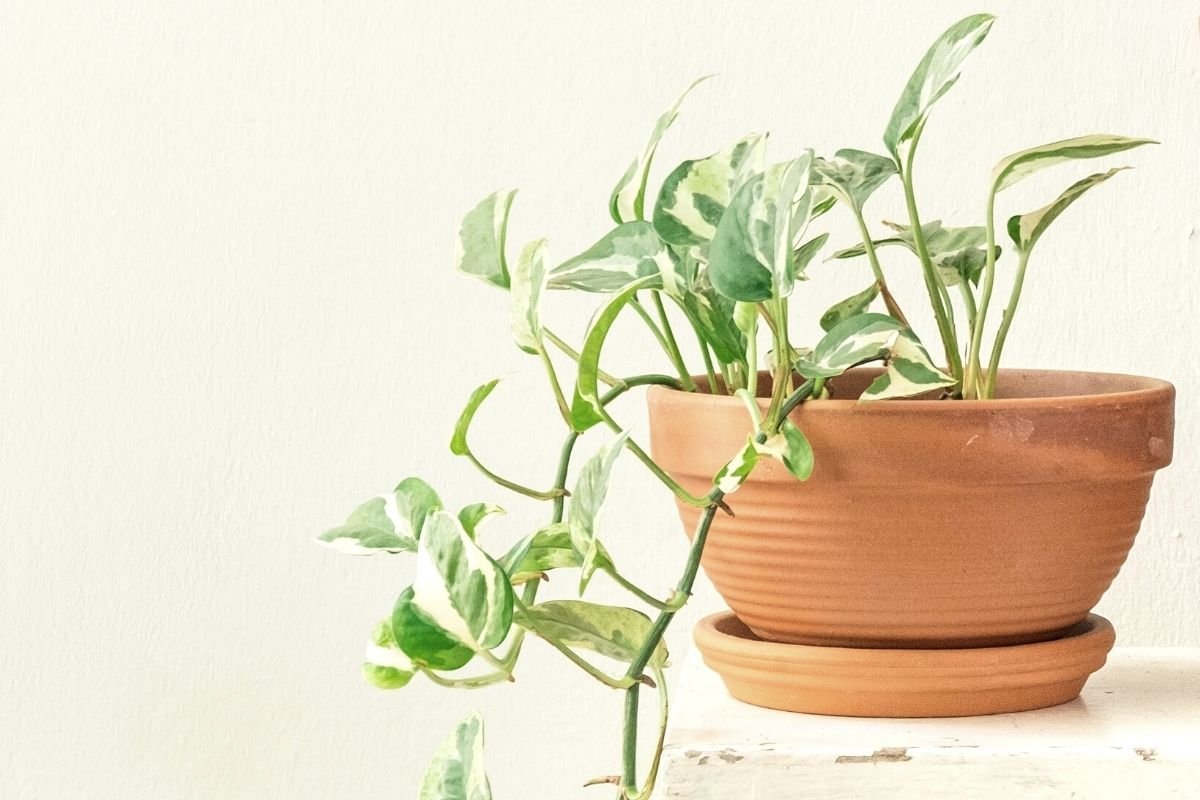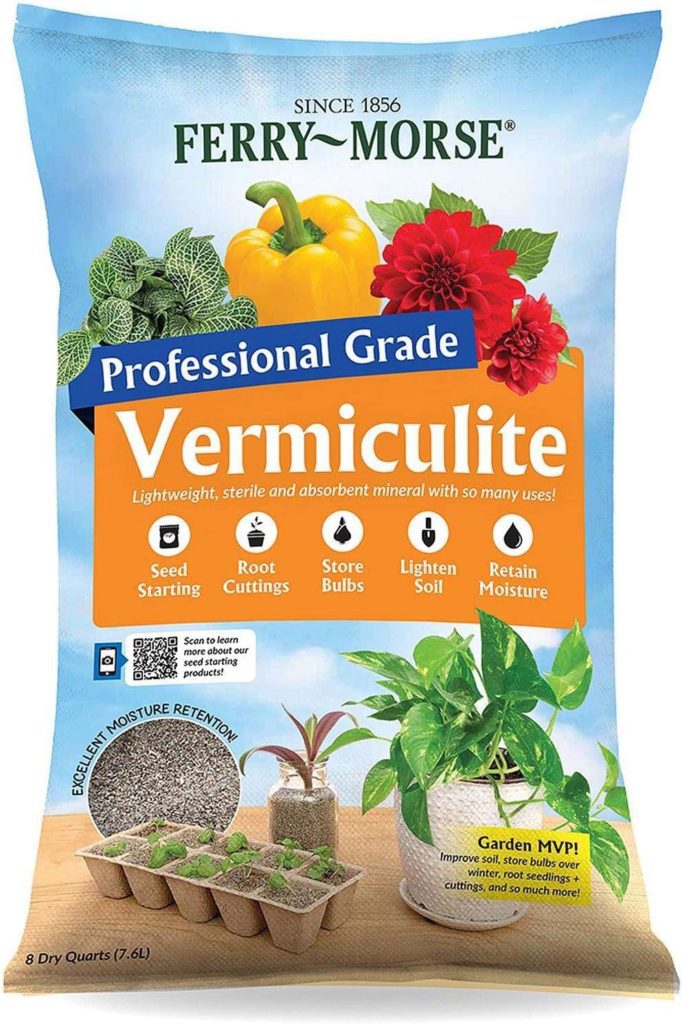Your once thriving tropical pothos isn’t looking so happy. Sigh. Its beautiful heart-shaped leaves are sagging and dull, the soil is beginning to grow a light mold, and it hasn’t produced new leaves in ages! But why? And how to save it?
You may have an overwatered pothos on your hands.
And when your pothos isn’t happy, nobody’s happy – as the saying goes (I think?).
Luckily, we’re here to help you save overwatered pothos from soggy demise, or worse – death by fungus gnats 🥺
It’s not too late though!

signs of overwatered pothos plants
You might be surprised by how many well-meaning plant parents kill their favorite plants through consistent overwatering. Some plant species tolerate water better than others, but overwatering can cause real problems for your pothos plants.
The science behind an overwatered pothos plant is actually pretty simple. Outdoors, excess water is usually absorbed by the soil and water table surrounding your plant’s roots, a filtration process that feeds them enough water when they’re thirsty and channels water away from the roots when quenched.
In your living room, this drainage process happens in a self-contained pot. When pothos are overwatered in a pot with the wrong soil and poor drainage, water has nowhere to go. This excess water stagnates in the pot and prevents air from getting to the roots, effectively suffocating them.
Overwatered pothos plants are really a sad sight! Here is a list of the most common signs of an overwatered pothos plant:
- curling leaves – Pothos plant leaves will give you plenty of feedback about their lack of or excessive amount of water. If you notice the leaves of your beloved pothos start to curl downwards you might have an overwatered pothos problem. As a way of decreasing their transpiration rate, the leaves of pothos curl down in an effort to reduce surface area. This seems strange since there is plenty of water at the roots of the plant, but the roots are unable to transport the water to the leaves.
- brown spots – Are common signs in overwatered pothos plants. Brown spots occur when the plant’s cells expand with the excess water. The excessive amount of water in the cells doesn’t have anywhere to go and causes swelling on the surface of the leaves that have a blister-like appearance. When the blisters pop they damage the leaf surface and make new brown lesions.
- leaves feel and look mushy – An overwatered pothos will show leaves that can feel mushy to the touch or may appear shriveled. Smelling the leaves of the plant up close may reveal a rotten or fungus-like odor.
- yellow leaves – If you notice mature leaves start to yellow you may have the case of an overwatered pothos. Yellow pothos leaves are a direct result of root rot which starves the plant of nutrients that it needs to be healthy and grow.
- mold growth on soil – Make sure you don’t see any mold growing on top of the soil where your pothos lives. Overwatered soil can give rise to mold growth and create a habitat where new spores can thrive.
- root rot – Many of the symptoms mentioned above are signs that your pothos might have root rot. Your plant relies on the roots to deliver oxygen water and nutrients to the rest of the plant. These processes can be severly damaged when a pothos is overwatered and the soil consistently gets too much water. The pothos growth may be stunted and it may die if the roots get smothered with water. This is due to the roots inability to breathe and transfer oxygen and nutrients to the rest of the plant. The roots may become black and die if left untreated. Always taking into account root health will help you to save overwatered pothos plants.
- wilted pothos plant – Leaves are a great indicator of what’s happening under the soil.. If you notice the leaves start to wilt drastically, it’s a sure sign your soil have been too wet for too long. Once you’ve reached this stage you must act very quickly to keep your beloved plant alive.
how to save overwatered pothos plants
If you’ve noticed any of the above symptoms in your overwatered pothos it’s time to take action. Stop watering your plants immediately, gather the necessary materials, and follow the simple steps below to save your overwatered pothos plants.
What you’ll need:
- Small pair of pruning shears
- Well draining soil (mix up your own batch of the best DIY soil for pothos)
- Pot with good drainage and saucer
- Small potting shovel
step 1: dry out the soil and remove pothos from the pot.
First, you’ll want to remove as much excess water as possible from your pothos. Look and make sure the holes in the pot are not clogged with dirt. Overwatering sometimes dislodges soil and can clog up the holes. If they are, simply poke a stick or sharp pointy object into the holes and get any excess amount of water out of the pot.
Place your plant in a spot that receives plenty of direct light to encourage water to evaporate from the moist soil and away from the roots. Make sure that the soil feels dry to the touch before you begin loosening the soil around your pothos’ roots.
step 2: loosen the soil around your plants’ roots.
Gently loosen the soil starting around the rim of the container. Insert the shovel into the soil and gently twist until the entire rim of the plant’s soil is cracked.
If your pot is small enough to fit into your hand, pick it up and invert it. Gently grip the base of the plant in your other hand simultaneously and lightly shake the pot until you can remove the plant. Pro tip, this is best done on a small tarp to avoid a soil mess.
step 3: trim away any signs of root rot
Now that your plant is in your hands, assess the extent of root rot. Gently remove excess soil from the roots. Once you have a visual on the roots check for any roots that appear black and sickly. Simply trim away dead roots with your small pruning shears. Unfortunately, you usually can’t save overwatered pothos plants with a fully rotted root ball. If this is your situation, you may need to say goodbye and get yourself a new plant.
step 3: plant into new well draining soil
If you found viable, healthy roots – you’re now ready to repot. Take out your new pot and fill it halfway with fresh well-draining potting soil. Gently place your Pothos’ roots into the soil and infill around roots until the level of the soil is just about 1 inch away from the top of the pot. This will allow you to water without spilling over the lip of the container. Place your pot in a position where the plant may receive lots of indirect light. This will allow water to evaporate more easily between each watering.
step 4: water sparingly until plant comes back to full strength
Water pothos plant sparingly in the coming weeks. Allow the soil to dry completely before watering again. Surprisingly enough, this dry spell will help your pothos recuperate. When you notice your plant regaining color and a bit of perkiness, begin to water on a regular schedule again.
Watering every 1 or 2 weeks is standard for the pothos plant. Always make sure to check how dry the top 2 inches of soil have become with a finger before watering. If you notice that the soil is still wet when you go to water your plant, wait a few days before watering.

tips for avoiding overwatering your pothos
Virtually ALL plant enthusiasts will overwater one of their leafy friends at some point. Once you re-pot and re-evaluate your watering schedule, check out these pointers to help your pothos stay perfectly hydrated and healthy!
- well draining soil – Your pothos needs well-draining potting soil. Air pockets in the soil are created by mixing in things like perlite, vermiculite, peat moss, and coco coir. Making a blend of these materials will help you avoid excess water build up in the base of the plant. Your chances of root rot will decrease drastically and the pothos leaves will stay happy and healthy. If your soil doesn’t drain well you can mix your own or simply buy a premix that specifically promotes drainage.
- pots with good drainage holes – Check that your pot has plenty of holes in the bottom. If you can’t add more holes to the bottom of the pot you already have you may want to repot your pothos into something more suitable.
- plant saucer with little feet – I really like to use little feet between my plant container and saucer. Little feet elevate your container up off of the saucer. Sometimes a solid amount of water can get stuck in your pot and not drain into the saucer because the holes at the bottom don’t have space to drain. Remember, wet soaking roots don’t receive any air and struggle to breathe.
- water pothos plant sparingly – It’s easy to keep the roots of your pothos happy by setting up a consistent watering schedule. Your pothos only needs water every week or two. Give the soil sufficient time to dry out completely before the next watering.
- container size – Your plant will thrive when its size matches its pot. This can help you to avoid overwatering, root rot, and bad drainage. By choosing the right container you can help to save your plant from undue stress and overwatering. If your plant has outgrown the pot, you’ll want to repot into something that is no more than 2 inches wider than the previous container. This change will help you water pothos plants every week or two.
- correct climate – Placing your pothos plant in the perfect conditions will help take the guesswork out of your watering schedule and help you avoid excess water. Choose a spot in your home that has good indirect light and make sure the temperature stays between 60 and 80 degrees. Just like its native habitat the pothos prefers higher humidity.
More about pothos
- How Often To Water Pothos Plants (And When To Cut Back)
- Marble Queen Pothos Care Guide
- How To Make Pothos Fuller (In 5 Minutes)
- Our top pothos fertilizer picks for luscious vines
- Golden Pothos plant care: how to keep them happy
- Pothos root rot: what to look for and how to fix it
- How to grow pothos in water for *decades*




